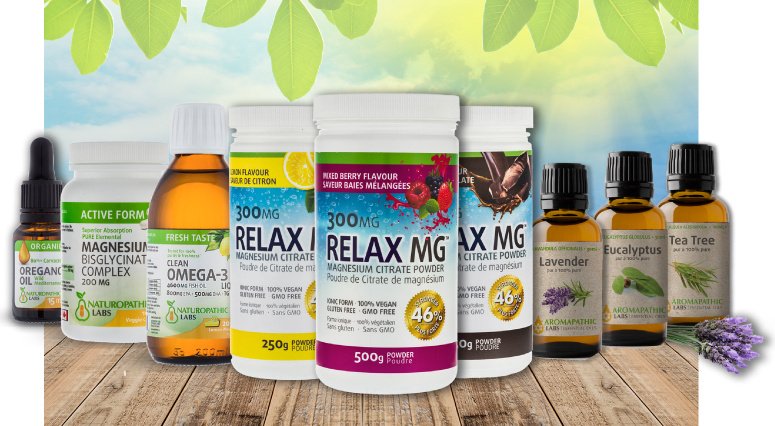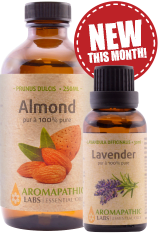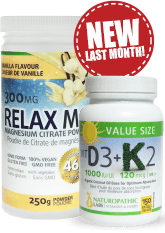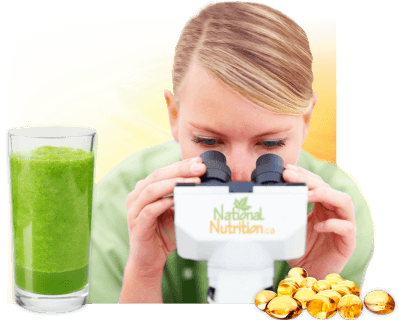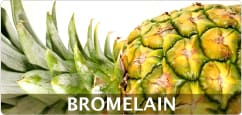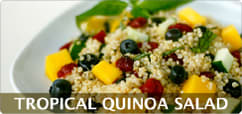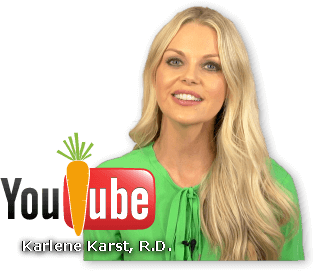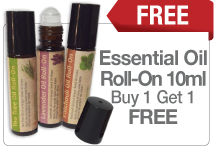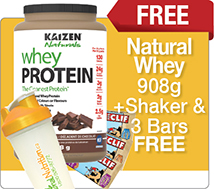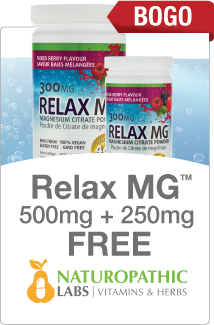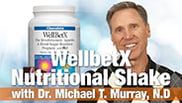- 500 mg
- Natural eggshell membrane (NEM®) (Gallus gallus domesticus, partially hydrolyzed chicken eggshell membrane)
- 25 mcg
- Vitamin D3 (Cholecalciferol)
Format
 Veggie Caps
Veggie Caps
30
Dosage
Take one capsule of Lorna Vanderhaeghe JointSmart daily or as directed by a health care practitioner.
Important Information
This product does not contain artificial colours or sweeteners; no dairy, gluten, GMOs, soy, wheat or yeast. GLUTEN-FREE. Consult a health care practitioner if symptoms persist or worsen. Do not use if pregnant or breastfeeding or if you have an allergy to eggs or egg by products
- Relieves joint pain in 7-10 days
- Helps to relieve/reduce joint pain and stiffness associated with osteoarthritis
- Helps in the development and maintenance of bones and teeth
- Helps in the absorption and use of calcium and phosphorus
Related Videos
No Related VideosArticles by a naturopathic doctor.
Lorna Vanderhaeghe's products are designed to empower women to take control of their health. Founded in 2010, Lorna Vanderhaeghe's natural health products include ADRENAsmart, BONE BOOSTER, CALA-Q plus, Celadrin Skin Cream, CLA plus, COLLAGEN plus, ESTROsmart, GLA Skin Oil/Gels, GLUCOsmart, IRONsmart, SLEEPsmart and more!
JOINT HEALTH
TAKE CARE OF YOUR JOINTS
Keeping our joints young and healthy is a great way to maintain an active lifestyle for as long as we live ...
In order for our bodies to be able to perform most of our daily routines, we require the ability to bend our limbs. It’s something that most of us take for granted, but this bending requires healthy joint function. Injury and inflammation can occur to any region of the joint and cause short or long-term restriction of movement and pain.|
What is a Joint?
At each point that one bone meets another, there is a joint in our body. Each joint in our arms, legs, feet and hands consists of several pieces, including: a cartilage cushion layer on the end of each bone, surrounded by a fibrous capsule that completely encloses the joint space.
The joint capsule is filled with slippery synovial fluid that allows the bones to slide easily over one another. In some joints, like our knees (and between our vertebrae in our spine), there are additional cartilage cushions known as “discs” in the middle of the joint to provide further shock absorption. All of our joints are reinforced by fibrous bands, outside of the joint capsule, called ligaments. These ligaments restrict the range of motion to protect the internal workings of the joint. Tendons are fibrous bands that connect muscles to bone, and allow our muscles to move the bones involved in our joints. When a tendon changes direction and/or must cross over a bone, like those that connect our biceps muscle to our shoulder and arm, they slide over a fluid filled cushion called a bursa to prevent fraying or damage. To remember which fibrous band is which, you can know that ligaments connect bone to bone, while tendons connect muscle to bone.
Types of Injury
Muscles and joints can become injured whenever the body is in motion. It often occurs when doing strenuous or repetitive activities, like playing sports or working on an assembly line. Different types of injury have specific names to help explain what type of damage occurred. The term “sprain” refers to partial or complete tearing of a ligament. Sprains cause sharp pain and rapid swelling of the area, often accompanied by bruising. The term “strain” refers to the damage caused to a muscle by overloading or overuse. Muscle strains can appear as: cramps, localized pain during movement, swelling, and loss of mobility. A more common term for a strain is “pulling a muscle”. Generally speaking, tendons are more difficult to tear because the attached muscle will usually stretch to prevent any damage. That being said, tendon tears, and even full tendon ruptures (complete tears) can occur, and may require surgical repair. Another, more common, joint injury is bursitis, an irritation of the fluid-filled bursa cushion. It usually causes localized pain on motion, as the tendon slides across the irritated bursa.
Joint Damage
Cartilage acts as a living shock absorber in your joints that cushions and protects your bones from damage during the stresses of daily living, working, and playing. Age, overuse, and injury, all cause small tears and other damage to the cartilage in our joints. When the damage happens too frequently, the body is sometimes unable to regenerate damaged tissue fast enough to keep your cartilage, ligaments, and tendons supple and flexible. If this continues over time, the cartilage deteriorates enough for bone to rub directly against bone. This type of irritation results in a condition known as Osteoarthritis.
WHAT YOU CAN DO TO HELP MAINTAIN JOINT HEALTH:
- TAKE GLUCOSAMINE & CHONDROITIN; THEY HAVE BEEN CLINICALLY PROVEN TO IMPROVE JOINT HEALTH. THEY CAN BE USED FOR PREVENTION AS WELL AS TREATMENT.
- EAT PLENTY OF VEGETABLES.
- EXERCISE.
- IF YOU INJURY A JOINT, GET THE APPROPRIATE PROFESSIONAL TREATMENT IMMEDIATELY.
- MAINTAIN AN ALKALINE PH BALANCE IN YOUR BODY; AN ACID PH PROMOTES INFLAMMATION.
- TAKE THE MINERAL SILICA; IT SUPPORTS COLLAGEN PRODUCTION.
- SEE A CHIROPRACTOR.
- TAKE NATURAL ANTI-INFLAMMATORIES LIKE MSM, BROM- ELAIN, AND CURCUMIN.
DID YOU KNOW?
(JOINT HEALTH FACTS)
- MOST PEOPLE PAST AGE 30 HAVE SOME DEGENERATION OF THE JOINTS WHETHER THEY HAVE SYMPTOMS OR NOT.
- BECAUSE POOR JOINT, JOINT INJURY AND ARTHRITIS CAN LIMIT LIFESTYLE, DEPRESSION CAN OFTEN RESULT.
- MANY PHARMACEUTICAL DRUGS FOR INFLAMMATION (SUCH AS VIOXX) HAVE SERIOUS SIDE EFFECTS. SOME WILL EVEN INCREASE THE DEGRADATION OF SOFT TISSUE.
Exercise - Protecting your joints
Exercise moves our joints, and provides a way to spread the lubricating joint fluid, much like the oil in your car coats the engine. This helps to keep the cartilage soft and flexible and to reduce the risk of injury. Be sure to warm up before starting more strenuous activities and stretch to help prepare the joints and muscles for the tasks ahead. It is important not to lift more than you can manage, and always use proper lifting techniques by squatting down and using your legs to lift heavy loads, while keeping your back straight. In cases of repetitive strain injuries, be sure to make your workplace and home life as ergonomic as possible. Maintain proper posture whenever possible and be sure to listen to your body. Pain is a message to slow down or stop what you are doing! You can always come back to it later.
Diet for Joint Health
To provide the body with the raw materials for tissue repair, it is important to eat sufficient amounts of protein or to use a protein supplement. Juice or eat plenty of raw fruits and vegetables including beets, garlic and radishes, as each of these is packed with vitamins, minerals and enzymes.
Be sure to drink at least 2L of filtered water to flush waste products from the damaged area and to hydrate the cartilage and provide sufficient joint fluid. To help prevent muscle and joint injury, eat chromium rich foods such as nutritional yeast, lobster and cheese. This ensures a steady supply of blood sugar to working muscles. You can eat wheat germ to provide octacosanol, which prevents strains by increasing muscle oxygenation, and vitamin E, which heals tissue. Eating oats can provide the connective tissue supporting nutrient, Silica.
Immediate Treatment of Injury - RICE
Upon first injuring yourself, it is essential that you immediately stop the offending activity. The acronym “RICE” is used to allow you to remember how to treat an acute injury (within the first 48hrs): Rest, Ice, Compress (like a compression bandage), Elevate. This will help to reduce swelling and speed healing. When icing, be sure to elevate the injured area while you are doing so, and move the ice around the affected area, performing an “ice massage”. Ice for 15 minutes, and then allow the area to warm for at least 45 minutes before icing again. Repeat as much as possible to reduce the amount of time required for total healing later. If you must use the injured joint soon after the injury, be sure to support it as much as possible to reduce strain to the injured area. This is where compression bandages come in handy, as do air casts and even crutches when necessary. Poultices made of Goldenseal, Fenugreek, Flaxseed powder, turmeric (CURCUMIN) or mustard can be used. They help to decrease swelling, decrease bruising and relax tense muscles. Be careful with mustard poultices as too much can cause the skin to blister. Topical and oral homeopathic and herbal preparations can also help to reduce inflammation and bring pain under control. See the chart below for recommendations.
Chronic Treatment of Injury
With chronic injuries, the treatment methods are a little different. If you have recently re-injured an old injury, then please treat it as an acute injury as listed above. Chronic injuries are those that have an ongoing low-grade problem due to improper or incomplete healing in the past. Check out our Osteoarthritis article for information on how to treat chronic joint degradation. In general, chronic injuries often respond well to alternating hot and cold treatments. Simply apply a hot wet towel or submerge the area in hot water (be careful to mind your tolerance and do not burn yourself), and then switch over to an ice water towel, or submerge the area in ice water. In general, the ratio of time is 3:1 (hot: cold), with whatever amounts of time work for you. If you are submerging the area in ice water for the cold time, be sure to limit your time to avoid frost bite. In general the alternations are done 3 minutes hot followed by one minute cold. Repeat as many times as you like, but always finish with a cold session and allow the area to warm naturally afterwards. These alternating treatments help to increase local circulation and speed healing. If you cannot commit to such a complicated procedure, simply apply heat to the area to help relax supporting tissues and stimulate circulation. Natural anti-inflammatory herbs like Curcumin and Boswellia can help to reduce pain-causing inflammation. Devil’s Claw is particularly helpful in pain caused by inflamed joint tissues.
Conventional Treatments
Conventional treatment of muscle and joint injury involves the use of anti-inflammatory medications and pain relievers. These can be effective at taking away the acute symptoms and reducing pain, but they do not help to heal the injured tissue. In fact, the use of such medications may make an individual return to activity too quickly, predisposing the area to re-injury. If you use these medications, please be sure to spend a day off of them before you decide if you are ready to perform any physical tasks with the affected area.
SUPPLEMENTS FOR JOINT HEALTH
Hyaluronic Acid (HA)
The cells in our tissues are often connected by an extracellular matrix. In our skin, eyes, and joint tissues this matrix is made up largely of hyaluronic acid (HA). In fact, HA is one of the main non-fluid components of synovial fluid as well. Not having enough HA can contribute to joint deterioration, and thus supplementation can prevent future problems with joint health by maintaining the cushioning within the joint.
Glucosamine and Chondroitin
Decades ago, researchers found that glucosamine and chondroitin are both building blocks for the molecules that make up tendons, ligaments, bones, and synovial fluid. They found that with age, the ability to regenerate and restore joint structure begins to fail, often due to a decrease in the natural production of glucosamine sulfate and other structural molecules in the body. This deficiency causes the production of new joint and connective tissue and the repair of old tissue to slow. Ongoing research has repeatedly found that co-supplementing glucosamine and chondroitin can help to reduce pain in those suffering from arthritis. The GAIT study published in 2008 found that this combination was most effective for moderate to severe arthritis pain in the knee, and gave 79% of sufferers a 20% or greater reduction in pain. This combination has been found to have much less effect in those with slight pain. The beneficial effects of chondroitin and glucosamine often took several weeks of supplementation to occur.
Collagen
Supplementing collagen can provide the body with the essential building blocks required to repair the soft tissues surrounding any injured joints. Type I & III collagens help to maintain your bone and repair damaged tendons and ligaments. Type II collagen is used in the production and repair of cartilage in the body. Thus supplementation with Type II collagen can promote repair of internal joint structures.
- Reviews
- POST A NEW REVIEW

